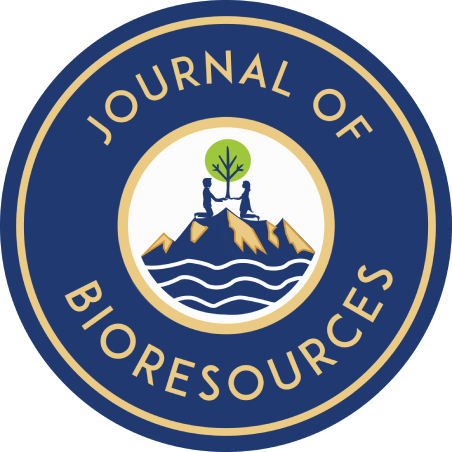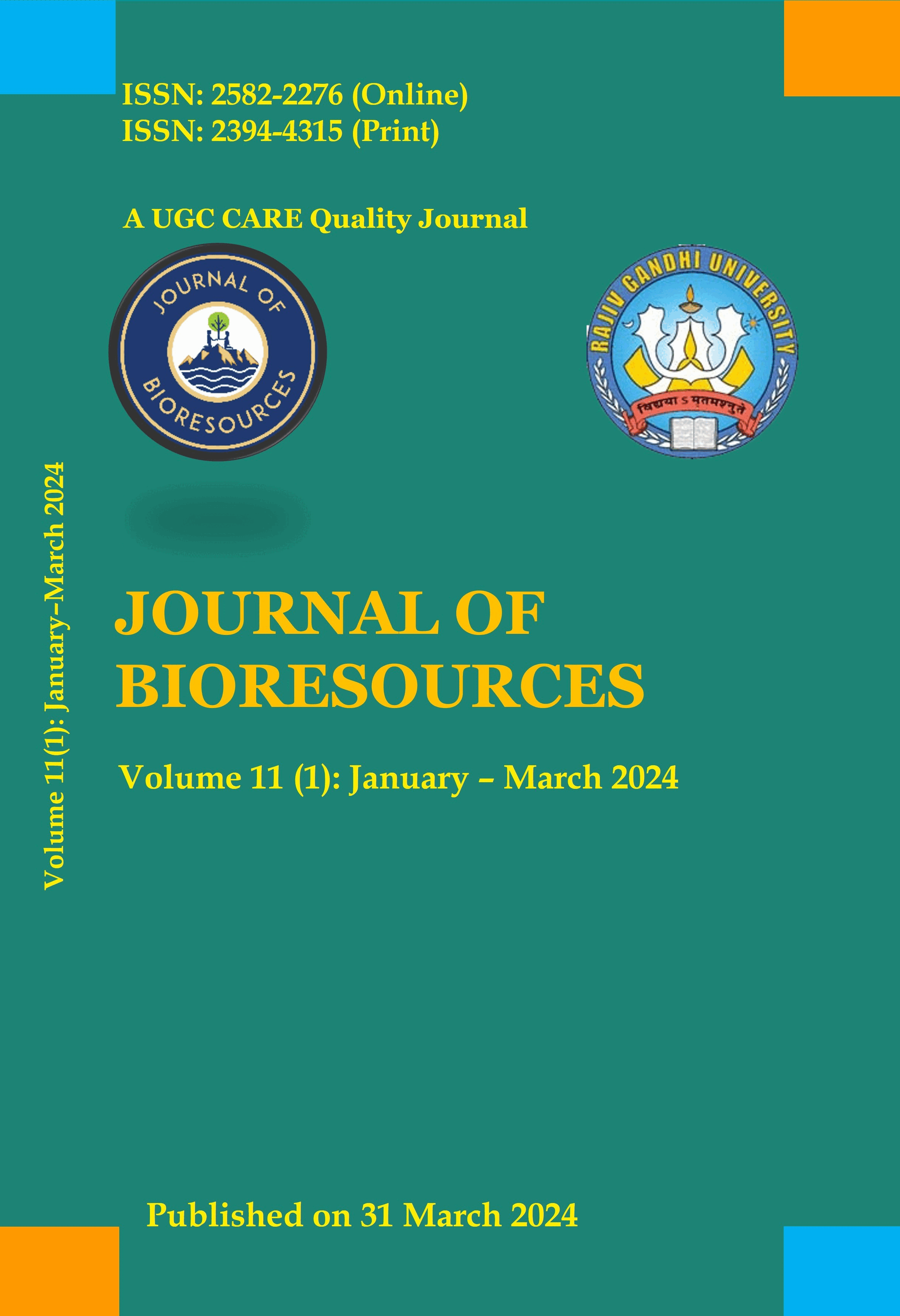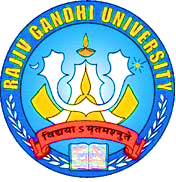Article Preview

Journal of Bioresources
Volume: 11 (1) : January-March 2024

Ethnomedicinal plants used by traditional healers of Bodo community in Udalguri district of BTAD, Assam for treatment of Jaundice
Abstract
Bodo community of Assam has been using plants as medicine since an unknown past. The traditional Bodo-healers, ‘Ojha’ are reported to have good knowledge in preparation of herbal medicines for curing several ailments of man and domesticated animals. Ethnomedicobotanical study in 40 villages of Udalguri district of Bodoland Territorial Area District (BTAD) of Assam during 2021 – 2022 and interaction with Ojhas and other knowledgeable people recorded 44 species of plants from 30 families and five formulations they use to treat Jaundice. The herbal formulations used to treat jaundice were found innovative and unique but the practitioners decline to share their detailed protocols to others. However, majority of the recorded plant species they use are commonly growing in the study area.
Keywords: Bodo-tribe; Jaundice; Herbal medicine; Traditional healers; Udalguri; BTAD; Assam
Introduction
The North Eastern Region (NER) of India, consisting of eight member-states namely Arunachal Pradesh, Assam, Meghalaya, Mizoram, Manipur, Nagaland, Sikkim, and Tripura, covering a total area of 2,62,230 km2 (Wouters and Subba, 2022; Borthakur, 1980). It is situated between 24.5oN to 28oN latitudes and 88.25o E to 96.0o E longitudes of Eastern Himalaya including Patkai and Naga Hills regions (Das, 2003). Assam, the ‘land of red-river and blue hills’, is the gateway to Northeast India and is the abode of numerous indigenous tribal communities living in close association with nature since time immemorial. The population of Assam is an admixture of different races which includes Mongolian, Indo-Burmese, IndoIranian and Aryan origin (Borthakur, 1980). Mainly 13 tribal communities live in Assam, they are Bodo, Rabha, Karbi, Mishing, Sonowal Kacharis, Deori, Dimasa, Tiwas, Tai-Phake, Singpho, Kuki, Kelma, and Tea Tribe. People of all these communities are rich in traditional knowledge related to utilization and conservation of medicinal plants (Borthakur, 1980). Bodo and Mishing communities are Tibeto-Burmese in origin and represent the largest tribal population in Assam (Anonymous 2014; Borthakur, 1980). Bodo people are the early settlers of Assam and are mainly settled in the Bodoland Territorial Area Districts (BTAD) region in the Northwestern part of Assam (Endle, 1911; CDPS, 2004). There are four districts under BTAD, namely Kokrajhar, Chirang, Baksa, and Udalguri, administered by the Bodoland Territorial Council (BTC). Bodo, Rabha, and Rajbonghis represent the major tribal communities living in Bodoland area. BTAD is situated on the north bank of the river Brahmaputra and foothills of the Great Himalayas, is endowed with rich flora and fauna of ecological, economic and cultural significance (Borthakur et al., 2018).
Like most other traditional communities in any part of the world, the tribal communities of BTAD also rich in traditional knowledge that includes knowledge of using plants as medicine. However, the knowledge on ethnomedicine differs from community to community. Different communities have different ways and means of practicing and preserving their own tradition of medical practices (Kotoky and Das 2008; Shankar et al., 2012). Such medical practices are closely related to the local flora and the type of diseases they suffer in an area. Among different diseases, jaundice is the most common ailment affecting the citizens throughout the world. In Rig-Veda (8000 BCE) Jaundice has been referred as Hariman disease. Jaundice was recognized by Charaka in 700 BCE when it was referred as Kamala and herbal treatments were prescribed to treat it (Vidyalankar, 1994). Hippocratic School in 200 BCE first reported Hepatitis (Nene, 2007). Throughout the world Jaundice is one of the most widespread and life-threatening diseases. It occurs mostly in the underdeveloped countries. Elevated concentration of bilirubin in serum causes Jaundice (Ullah et al., 2016). The term ‘jaundice’ has been derived from the French word jaune, which literally means yellow (Constantin, 2011). Jaundice may be caused by an obstruction of bile ducts which normally discharge bile salts and pigments into the intestine. It is caused by bilirubin which comes from red blood cells. The colour of the skin and urine vary depending on the level of bilirubin (Drummod and Kappas, 2004). Only 20% of bilirubin comes from multiple sources like myoglobin, cytochromes etc. and about 80 % of it is derived from the heme-group of haemoglobin. This haemoglobin comes from the destruction of red blood cells in the reticuloendothelium of liver, spleen, and bone marrow. Jaundice is less common in adults and is mainly observed in infants but it creates serious condition when it affects the adults (Memon et al., 2016). Infact, the occurrence of jaundice (Icterus neonatorum) in newborns is observed for centuries (Juncker and Stahl, 1724).
People living in BTAD also, quite often suffer from jaundice and for its treatment they prefer to depend on their botanical origin traditional medicinal knowledge. Present ethnomedicobotanical study was undertaken to document the plants used by the bodopeople in Udalguri district of BTAD, Assam (India) (Figure 2) for the treatment of jaundice.
Section Snippets
Materials and methods
2.1. Study area
BTAD is consisting of four districts in north-western region of Assam, namely Udalguri, Chirang, Baksa and Kokrajhar covering an area of 9612 sq km. Udalguri district covers 20.93% (2012 sq km) of the total area of BTAD and is located at 26°46' and 27°77' North Latitudes and92°08' and95°15' East Longitudes (Figure 1 and 2). This district comprises of 800 villages is bounded by Bhutan and West Kmeng district of Arunachal Pradesh in the North, Sonitpur District in the east, Darrang district in the South and Baksa district in the west (Anonymous, 2014).
Result
This study recorded 44 species of medicinal plants clubbed within 40 genera from 30 different families used for treatment of jaundice among the traditional healers of Bodo community in BTAD, Assam. Fruits were reported highest among the plant part harvested and used followed by bark and whole plants (Figure 3). The survey elucidated the use of five unique herbal formulations for treatment of jaundice, all plant based, and are in use by different traditional medicine practitioners. All the five formulations used plants but, in some cases, little non-plant materials are also used.
References
Aleem M. 2020. Anti-Inflammatory and Anti-Microbial Potential of Plumbago zeylanica L.: A Review.Journal of Drug Delivery and Therapeutics 10 (5): 229 – 235.
Anonymous. 2014. Census of India 2011. Series 19, Part XIIA. District Census Handbook, Udalguri. Director of Census Operations, Assam.
Assam state website: Udalguri district https://www.census2011.co.in/census/district/167-udalguri.html
Borthakur SK.1980. Medicinal flora of Karbi-Anglong (Mikir-hills), Assam with reference to Ethnobotany. Ph.D. Thesis, Guahati University, Guwahati, Assam.
Borthakur SK, Baro D, Bawri A and Boro A. 2018. Flora of BTAD (Bodoland Territorial Districts, Assam), Vol. 1-4. EBH Publishers, India.
Camille D. 2014. Ethnobotany, phytochemistry and pharmacology of Stephania rotundaLour. Natural Products Chemistry Research, 2: 5. [2nd International Conference and Exhibition on Pharmacognosy, Phytochemistry & Natural Products, August 25 – 27, 2014. DoubleTree by Hilton Beijing, China].
CDPS. 2004. https://en.wikipedia.org/wiki/Bodoland_Territorial_Region
Chandrika UG and Kumarab PAASP. 2015. Gotu Kola (Centella asiatica): Nutritional Properties and Plausible Health Benefits. In: Advances in Food and Nutrition Research, Volume 76, chapter 4. ISSN 1043-4526. Elsevier Inc. http://dx.doi.org/10.1016/bs.afnr.2015.08.001.
Constantin T. 2011. Jaundice obstructive syndrome. Current Health Science Journal 37: 96–100.
